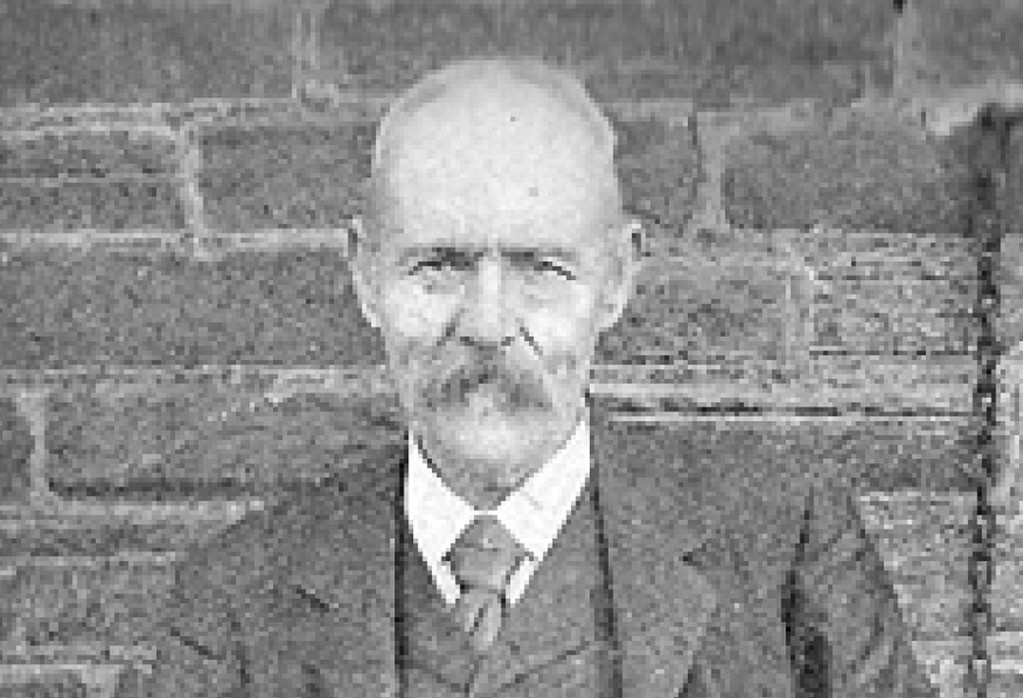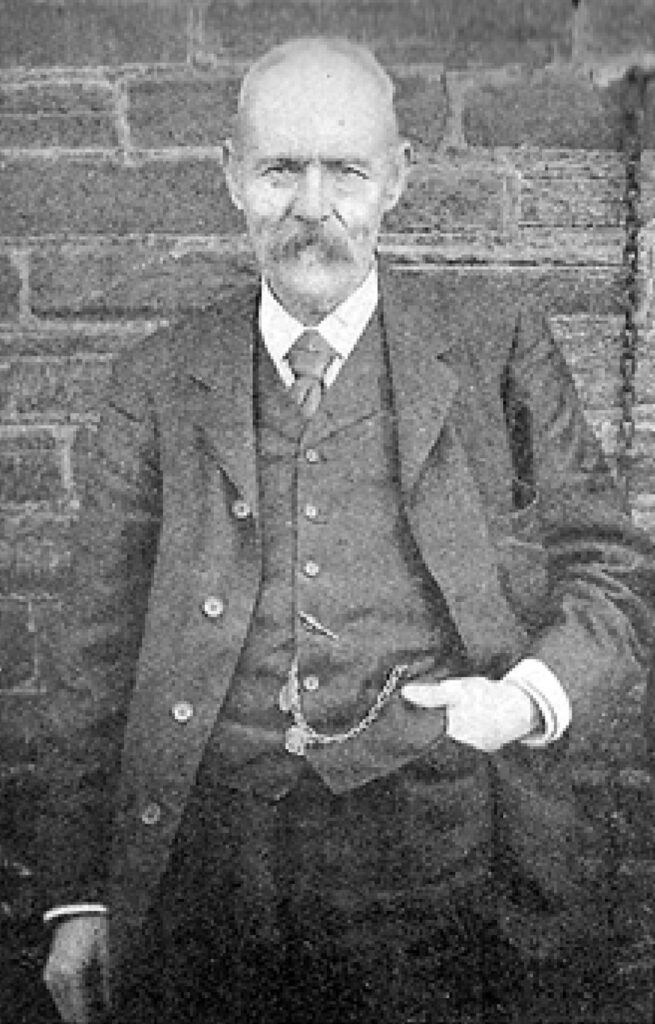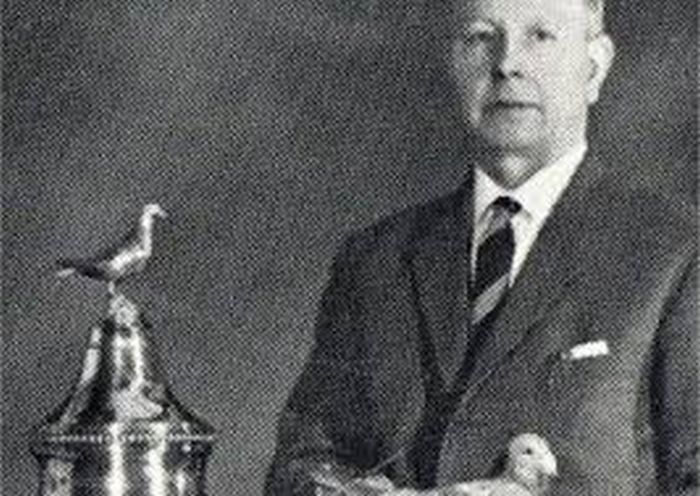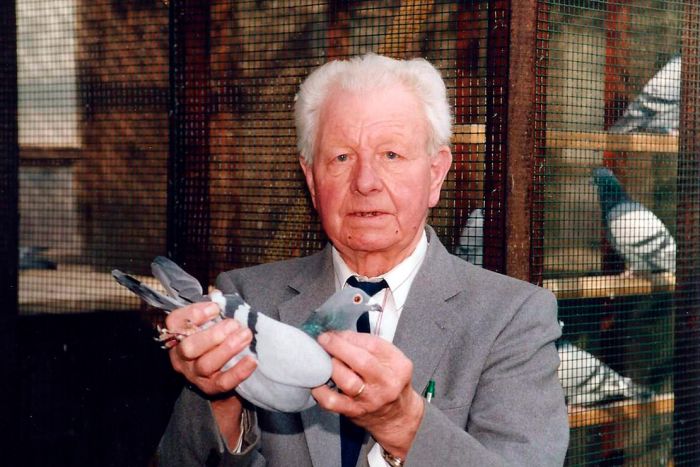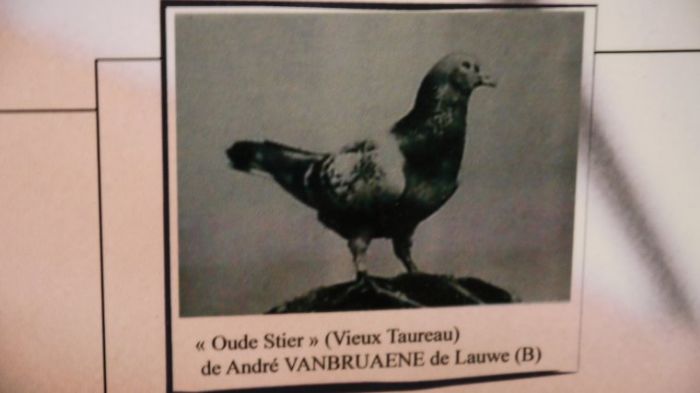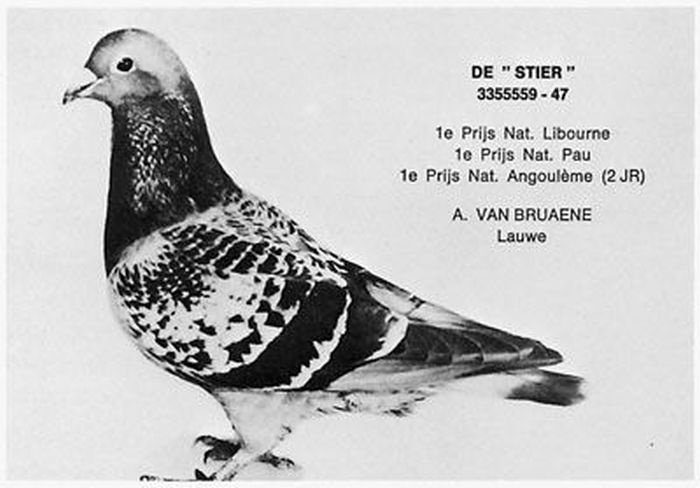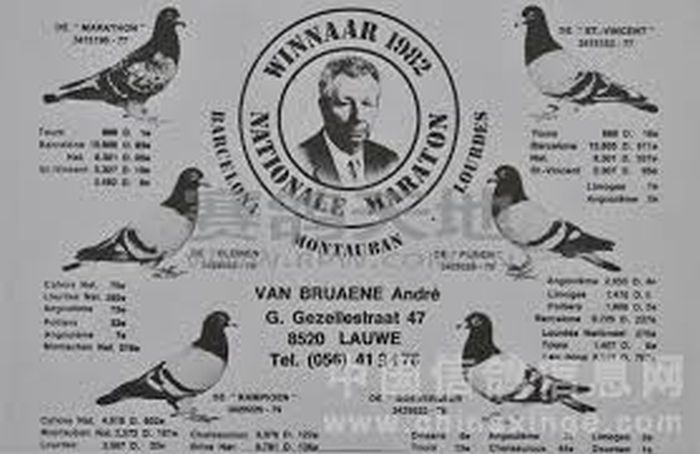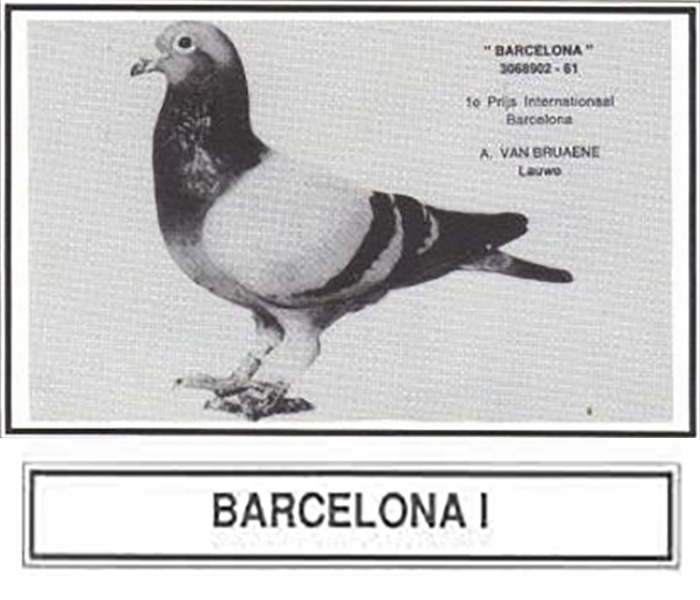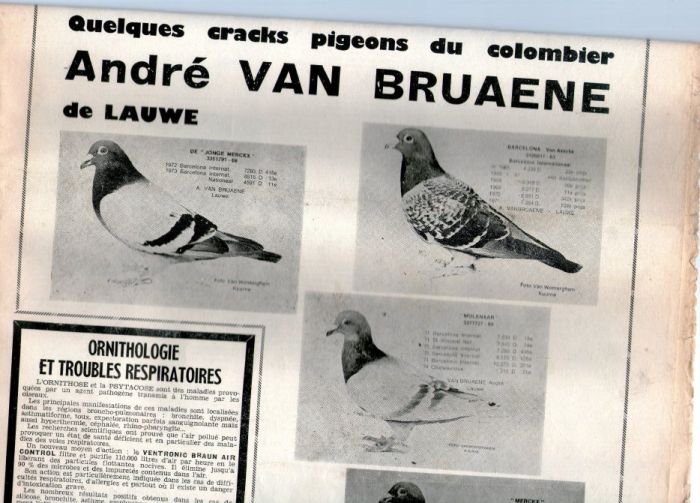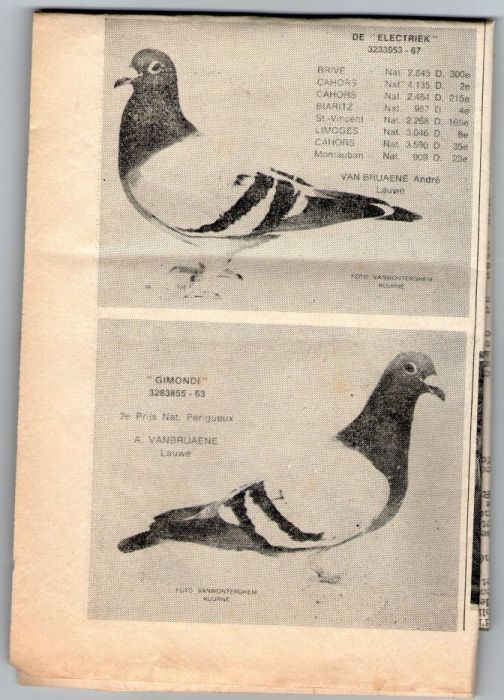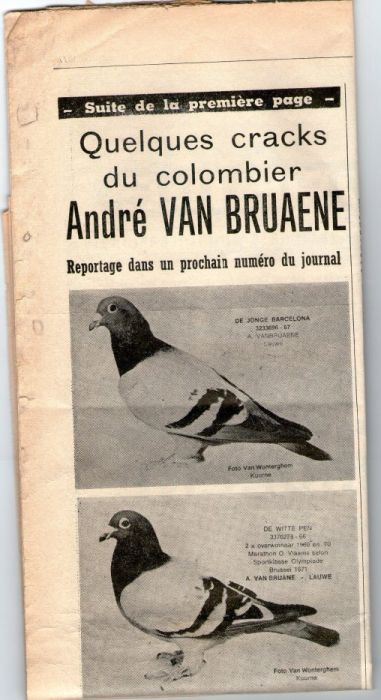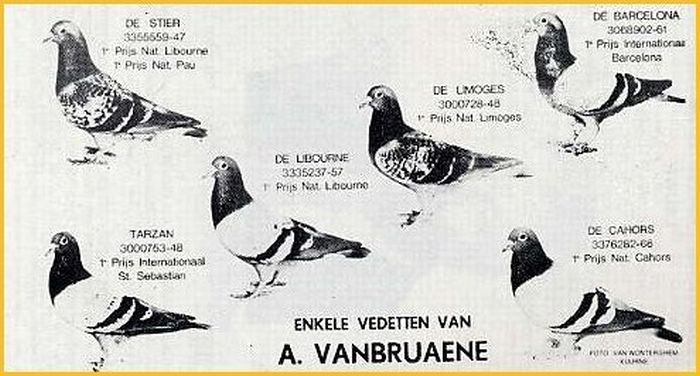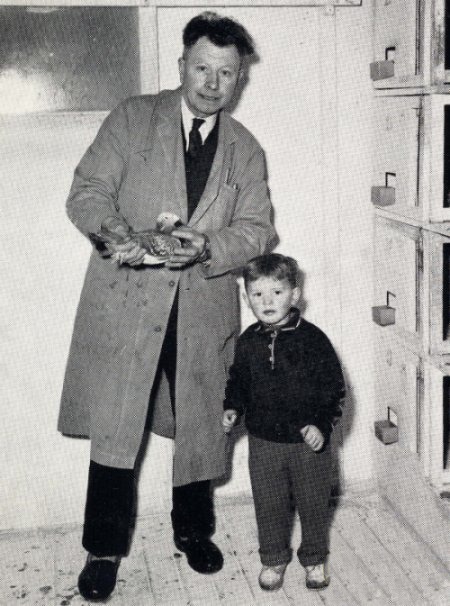Northrop Barker
Northrop Barker, Racing Pigeon Pioneer, Master Breeder and Racer, was born 1843, in England.
- Steve O'Dea
- March 25, 2021
- 9:05 pm
Watch, Listen or Read about the creation of the Barker Racing pigeon strain below here....
 “Northrop Barker represents the very dawn of pigeon racing, anywhere in the world, with serious racing only about 15 – 20 years in the making in the very home of pigeon racing, Belgium,”
“Northrop Barker represents the very dawn of pigeon racing, anywhere in the world, with serious racing only about 15 – 20 years in the making in the very home of pigeon racing, Belgium,”
Northrop Barker, moved to Belgium from Yorkshire and became so good at this new sport of pigeon racing that his fame literally travelled across the globe. there is certainly ample evidence to form a picture that the Englishman, Barker, had been in Brussels (Cureghem), Central Belgium from at least 1868 (probably with his extended family – he was 25 years of age in 1868 and about the precise time that serious pigeon racing took hold)
Lieut-Col. A.H. Osman OBE in his book, The Production of a Strain, writes that Barker purchased the factory from his race winnings. One way or other, it is easy to make the connection that “the factory” was a linen/lace and cotton weaving factory, driven by a common Boulton & Watt rotary motion steam engine of the day (Barker reportedly became a naturalised Belgian so he could hold property rights). Like many wealthy merchants in the cloth trade, he was drawn to the new sport of pigeon racing. Through his contacts within the textile world he not only exported his cloth, but also his birds around the world including Australia and New Zealand. In Sydney through a textile merchant named Samuel Hordern, who he was in contact from as early as 1880.
Northrop Barker represents the very dawn of pigeon racing, anywhere in the world, with serious racing only about 15 – 20 years in the making in the very home of pigeon racing, Belgium, following the general advent of Electromagnetic Telegraphy, by 1850, and triggered the demise of the homing pigeon used extensively for business communication purposes.
It is also relatively easy to pinpoint the start of distance racing as being connected to railways development, which apart from horse and carriage, or wagon (and to a much lesser degree by ship and barge) was the only satisfactory means of land transport that could convey large numbers of pigeons, at least until well into the 20th century, when commercial motor vehicles began to emerge. So, there is a universal time lag between short and long distance pigeon racing and is very much aligned to railway development.
 “…At the time the English fancier was using predominantly what effectively were just homers on the natural system, which was simply no match. The old English strains were absolutely slaughtered in all types of races.”
“…At the time the English fancier was using predominantly what effectively were just homers on the natural system, which was simply no match. The old English strains were absolutely slaughtered in all types of races.”
In the same time-frame, pigeon racing was viewed in a different light in 1880. Barker constantly referred to his birds as pets, and while he accepted the reality of loss, he had a close affinity with his birds and attempted to avoid losses at all cost. In 1880, pigeon racing captured the imagination of both the fancier and the general public and generated a higher profile and consequentially appealed to a wider range of participant, particularly the wealthy and well-connected set, and gave pigeon racing a degree of respectability, not necessarily enjoyed at that level today, or previously.
He had the long-cast Antwerp, Brussels, pigeons (as opposed to the short faced, bull necked, Leige, Verviers, Anvers type) and he was not inclined to say exactly whereabouts he obtained them, although he does write about buying out the whole loft of a competitor to obtain just one pigeon, so it is reasonable to believe that Barker negotiated for good pigeons, where ever he found them and that is not an unreasonable hypothesis, with the resultant mixture truly becoming “my strain”, as he often referred to it. He was a reasonably educated man and it shows in his letters (the fact he could write in those days is sufficient proof in itself) and the company he kept.
He was born in 1843 (he was 2 years older than Logan) a declared Freemason, married with two children at the time, Mary and Armand. Barker lived at 46 Rue de Fiennes, Cureghem, Brussels, a very short street in the heart of Cureghem. A modern aerial view of the street shows dense motor traffic, but it also indicates housing very close to the road verge on both sides of the street and it is not unreasonable to conjecture that Barker’s house could still be standing.
According to Lieut-Col A H Osman, OBE, when John Logan, who was eventually to become a Member of Parliament (Liberal Member for Harborough, 1891 to 1903) made contact with Northrop Barker, Grooter was the most famous racer in Belgium, with N. Barker not far behind.
Word has it that Barker’s birds were based on the strains of Hannot (Hainaut) and Marica, or Marcia. Marcia (Flemish for Mary and named after his daughter) strayed into Barker’s loft as a squeaker, allegedly in 1869. It stayed and raced (these birds did not have identification bands) and became the most famous stock hen Barker ever owned.
Osman was to have said that Barker once whispered to him that he thought Marica was a Grooter. Northrop Barker was the very early “gateway” for continental pigeons making their way across the Channel and where much emphasis was placed on his fine judgement of pigeon bloodstock. It has been said, initially by Lieut-Col A H Osman OBE, that the famous Irishman in England, John W Logan, bought out Barker in the late 1870’s, but the letters from Barker to Hordern in Australia, indicate that Barker set Logan up with birds over an extended period, and as late as 1885.
 “…..Northrop Barker was the very early “gateway” for continental pigeons making their way across the Channel and where much emphasis was placed on his fine judgement of pigeon bloodstock.”
“…..Northrop Barker was the very early “gateway” for continental pigeons making their way across the Channel and where much emphasis was placed on his fine judgement of pigeon bloodstock.”
Many were from Barker himself, but Barker apparently also purchased birds on Logan’s behalf and paid huge money for some of them – fifty pounds each in 1880 is mind-boggling and something like a year’s wages for a Welsh coal miner in 1879 and close to a year’s wages for anyone in full-time work in 1895!
In terms of financial position, Barker admitted to being “comfortable”, but adds that Logan “is a very rich man”. In reality, he was probably not fully aware of Hordern’s financial status, where simply those that truly have “it” don’ttalk about “it”. Hordern did send presents, one being an egg for Mrs Barker, which is likely to be an original 1884 Faberge Imperial Egg – a thing of beauty and worth a small fortune. Collectively, they had to be living in another world and insulated from the hardship going on around them – it was not a good time to be a worker.
Barker and Logan were fast friends and they visited often and Barker, together with his family, traditionally spent the Autumn and New Year festivities at Logan’s residence in south Leicestershire, central England, and whiled away many hours and days among the pigeons.
In a letter actually reproduced in the Australian Pigeon Digest, Barker describes how he was prepared to stake his reputation on the reputation of John Logan, who had also sent birds to Australia. In 1883 Logan stayed over with Barker for three days and was present when Barker won the Great National of that year. In the same letter he said he let Logan have 40 pigeons on that visit and this seems to be the magnitude of a Logan style “buyout”. They did not have pigeon clocks and had to run the bird to a central point for verification and Barker’s marking station was a mile (1.6kms) away. Picture the birds in subsequent races and their motivation to ‘trap’. Barker writes about a good ‘trap’ only taking him 6 minutes and flying against hundreds and even thousands of birds and winning despite these nightmare ‘traps’! How time has changed!
By 1887 Barker writes of his glass ‘house’ (which could hold four people) built on the top of his three story home, so he could wait for the birds out of the weather and also to enjoy the sunshine on fine days and the magnificent view across Brussels. It would have been nice, but also another inhibitor to getting a good fast trap, although with his propensity to regularly catch colds, his light body frame and weak chest, it was probably a good idea too.
 “…..…Mr. Barker is a remarkably keen fancier – he knows what there is in a bird, and he knows the best and surest way of getting it out of him. His family too appeared to be almost as keen as himself… ”
“…..…Mr. Barker is a remarkably keen fancier – he knows what there is in a bird, and he knows the best and surest way of getting it out of him. His family too appeared to be almost as keen as himself… ”
He had English fanciers beating a path to his door and an extract of an 1891 Homing News article written by the famous Squills describes a loft visit that follows in part – “Adjoining to the loft we were personally introduced to every subject of importance. Chief among them was the celebrated Dublin Cock, a grand bird that had set the seal to his own fame and also demonstrated the indomitable pluck of his owner. At the time he was suffering from an accident with a telephone wire, but was doing well.
Derby II too was in rare trim, having just got back from Dax and looked as though he had merely flown round the dome of the Palais de Justice. We also saw the seven competitors of the National race (Dax) five or six of which had won prizes. To say they were grand birds in grand condition does not express half enough.
We were then shown the young birds in a separate loft, many of which had that day competed from Orleans and had won a very substantial sum in prize money. After looking them carefully over, I could not wonder that Mr. Barker should succeed in the races. …Mr. Barker is a remarkably keen fancier – he knows what there is in a bird, and he knows the best and surest way of getting it out of him. His family too appeared to be almost as keen as himself, and every one was greatly interested in the success of the household pets.
Consider Barker’s feeding methods, in fact, the measures he went to obtain first class feed is no different from that which we do today. I could not help but smile when he recommends hotting up the short distance birds with hemp seed, but not giving it to the long distance birds, instead keeping them cool and their senses about them and he underlined the word “cool” in emphasis. The analogy he used, “dry as snuff”, Is another giveaway to the age in which the letters were written. Tobacco – snuff, snorted up the nose, held sway in the 18th century, cigars in the 19th and the manufactured cigarette of the 20th century, and where the 21st should just about see the end of the tobacco run.
There is an article written in the APK in January 1925 by Lieut-Col. A.H. Osman, OBE, entitled The Production of a Strain, the Brussels Group, which contained the following comments. “In England, many of our first Belgian importations came from Antwerp, and it was not until 1878 when Mr. J W Logan bought the whole of N Barker’s loft, that we began seriously to import some of the best-bred long-distance Belgian birds into this country. It is lucky that we did so, or we should not have had the fine class of pedigree long-distance racer we possess in this country today that proved so valuable in the Great War.”
As comment, in this present day 2021, there are several references back as far as 1910 (Osman) and through to 1925 (Osman) 1950 and thereafter to present day to the effect that Logan had bought out Barker in 1878. There are numerous references in the letters to selling birds and placing birds with Logan prior to 1880 (and at one stage Logan did have the pick of his old birds at an undisclosed price and described as a “big figure”) and this continued at least up to 1885, coupled with a continuing record of racing with, as he called it, “my strain” further lends support that no complete loft buy-out took place, at least until very much later, certainly well beyond 1892.
 “…..…If Northrop Barker’s strain was a virus, it could not have spread any faster, and is testimony to the goldmine he created…. ”
“…..…If Northrop Barker’s strain was a virus, it could not have spread any faster, and is testimony to the goldmine he created…. ”
It is pertinent to say that John Logan lived to a ripe old age and supervised his own world famous sellout on 26/1/1924 and could have corrected that perspective.
In terms of testimony, it could not be said any better than that written by Lieut-Col. A.H. Osman OBE, quote,
“I have placed Barker first amongst the Brussels fanciers and I think I am justified in doing so….”
We have to consider the influence of the pigeons on the English families descended from them, and many of the best English long distance birds contain this blood….no other strain has proved so valuable from the Brussels group in this country.” Indeed the world could have been added to this statement.
Very few of the old-time Belgian fanciers claimed to have a pure strain of pigeons; this claim was made for them by their admirers. It is only when a fancier has a complete sale of all his birds that we get a true line on how he carried out his breeding operations. Let us take the late Northope Barker’s sale as an example.
When Barker died, Madame Barker consigned the whole of his birds to Mr. Jack Barcroft of Manchester for disposal. Sixty-three pigeons were advertised in the Fancy Press; thirty old and thirty three young. Here are the pedigrees and particulars as set out in the advertisement which appeared in the “Racing Pigeon” of August 21st, 1909.
It should be remembered that Barker never made any claim to have a pure strain of pigeons, and freely admitted having bred some of his best from an unknown hen that entered his loft, and which he named “Marica.” This hen afterwards became B11 on Logan’s list.
An examination of the pedigrees of the pigeons offered at this sale shows that Barker had not a pure strain, but a mixture of Van Coillée’s, Carpentier’s, Grooter’s, Claes’, Duchateaux’s, Gits’, Desirant’s, and Barker’s.
A family has to be built from many parts, carefully selected to always give the very best results. Northrop Barker was a pioneer in breeding and racing pigeons. Birds based on his family of birds have dominated distance pigeon racing in UK, Ireland, Australia and India for many years. The name Northrop Barker, the Yorkshire man who helped mould Belgian distance pigeon racing, is worthy of a place in the Hall of Fame.

